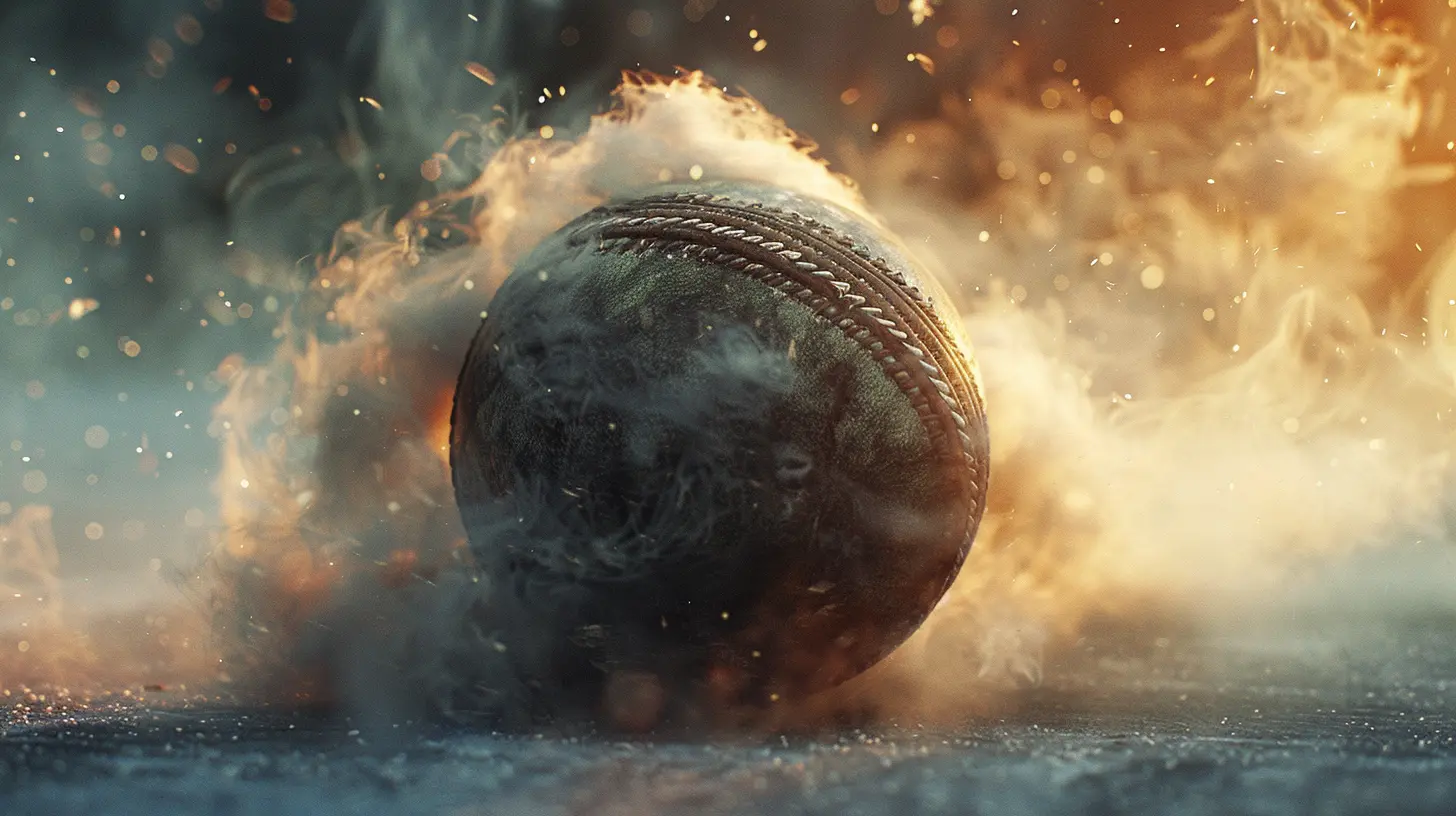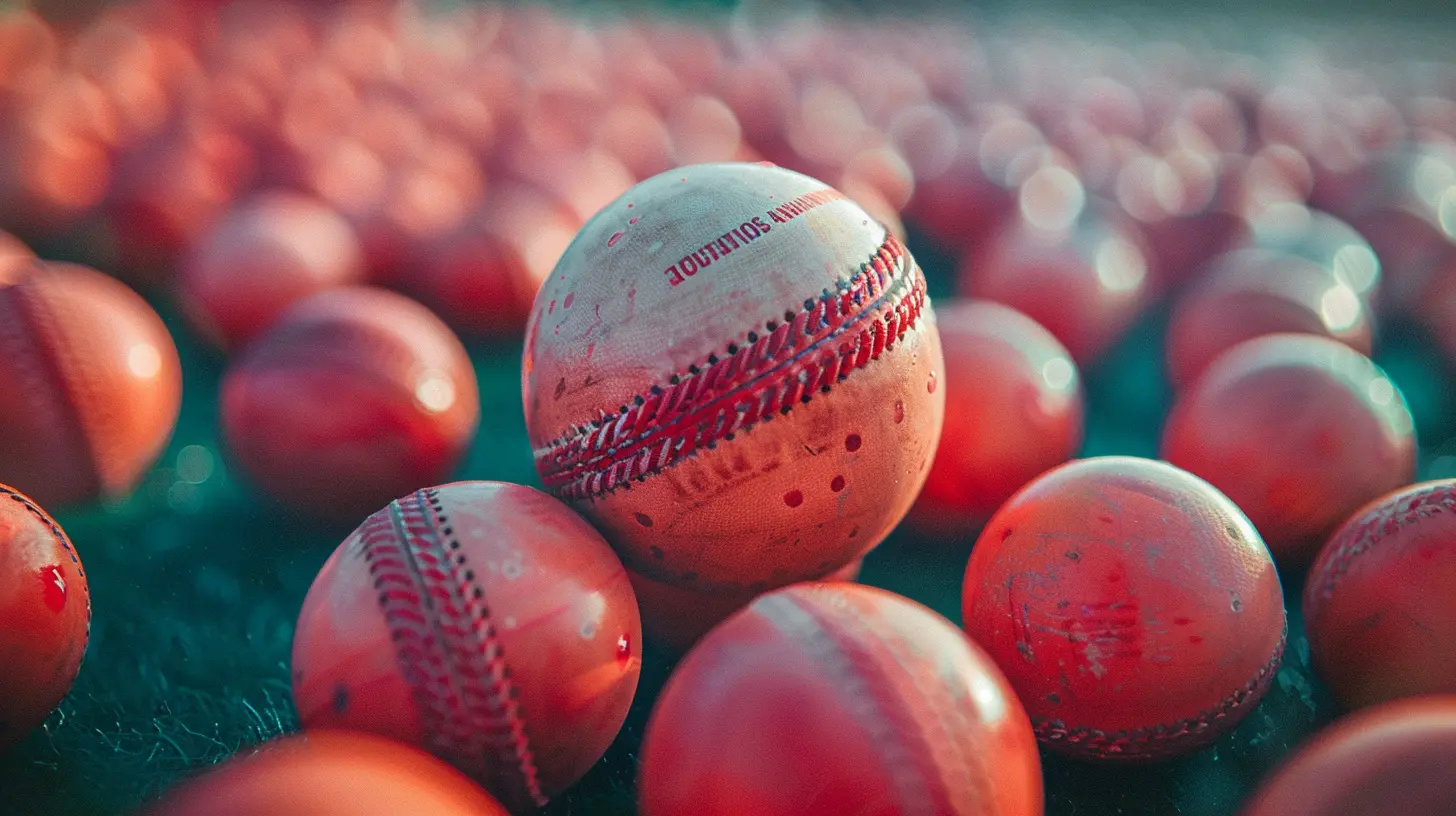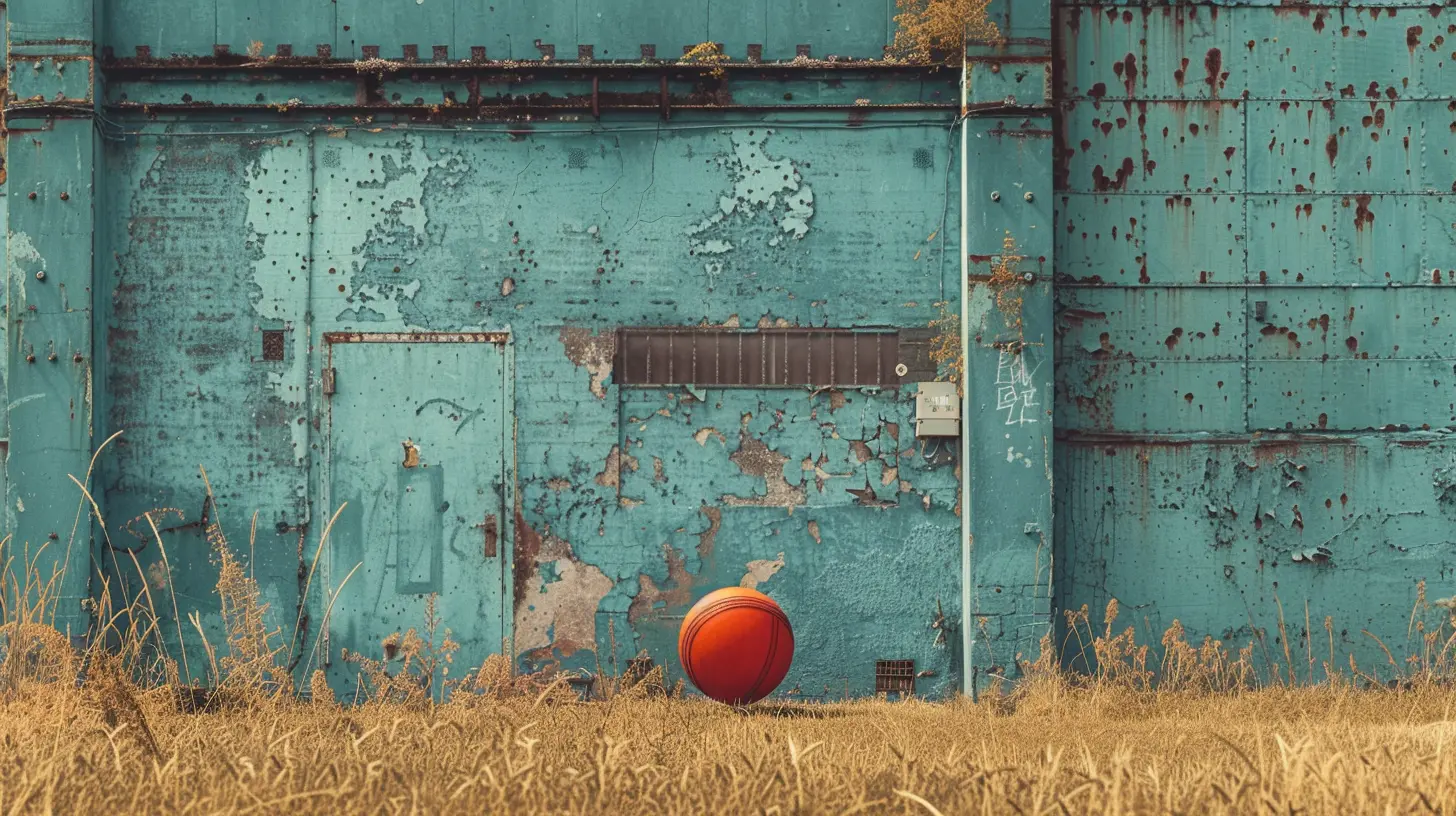The Journey of a Cricket Ball: From Factory to Field
20 November 2024
Cricket is not just a game; it’s a religion for millions around the world. And at the heart of this religion, lies a small yet mighty object – the cricket ball. It’s a little marvel that has been hit, bowled, spun, and caught countless times on fields across the globe. But have you ever wondered about the journey of a cricket ball? How does this seemingly simple object go from raw materials to becoming the very thing that determines the fate of cricket matches?
In this article, we’ll take you through the fascinating journey of a cricket ball, from its birth in a factory to its final destiny on the field. Let’s dive in.
The Birthplace: A Cricket Ball's Factory Origins
When you hold a cricket ball in your hand, it's easy to overlook the complexity behind its creation. But here’s the truth: making a cricket ball is an art and a science. It’s not just about stitching some leather around a cork core. Each cricket ball is a product of meticulous craftsmanship, tough materials, and years of refinement.The Core of the Matter: Cork or Rubber?
At the heart of every cricket ball lies its core. This is essentially the ‘soul’ of the ball, and it’s typically made from cork. But not just any cork—this cork is specially treated and layered to ensure it compresses and springs back when struck, giving the ball its characteristic bounce.Some modern cricket balls, especially those used in training or for younger players, incorporate rubber instead of cork. Rubber is more cost-effective and durable, although it lacks the same nuanced feel that cork provides.
The Outer Layer: Leather, Tanning, and Dyeing
Next comes the outer layer: the leather. Cricket balls are traditionally wrapped in high-quality cowhide leather. The leather is crucial because it not only protects the core but also affects the ball’s swing, seam movement, and overall durability.Once the leather is selected, it undergoes a tanning process. Tanning ensures that the leather becomes tough enough to withstand the immense pressure it will face during a match. After tanning, the leather is dyed, often bright red for test matches or white for limited-overs games. And let’s be honest, watching a brand-new red cricket ball zip through the air is one of the most satisfying sights in cricket!
The Magic of the Seam: Stitching It All Together
Here’s where things get really interesting. The seam of a cricket ball is perhaps its most defining feature. It’s what bowlers use to grip the ball and what batters dread when they see it dart off the pitch unpredictably.The core, now encased in leather, is stitched together with a heavy-duty thread. Believe it or not, the stitching isn’t just cosmetic. It plays an integral role in how the ball behaves in the air and off the pitch. Seam movement, reverse swing, and spin are all influenced by this delicate stitching.
Generally, a cricket ball features around 80-90 stitches on the seam, and this stitching is done by hand in many cases. Yes, you read that right—hand-stitched! This ensures that the seam is not only durable but also provides the right amount of grip for bowlers.
Quality Control: The Inspection Stage
Once the cricket ball is fully assembled, it’s not immediately packed and sent to the field. Nope, it has to pass through rigorous quality checks. After all, not just any ball can be used in an international cricket match.Checking the Weight and Size
Every cricket ball must adhere to strict guidelines set by the International Cricket Council (ICC). The ball’s weight, for example, has to be between 155.9g and 163g. Its circumference must be between 22.4 and 22.9 cm.If a ball doesn’t fall within these parameters, it’s back to the drawing board, or rather, back to the factory for adjustments.
Testing the Bounce and Durability
It’s not just about size and weight, though. Each ball is also tested for its bounce and durability. Machines are used to replicate the impact forces a ball will experience during a match. If the ball can withstand these tests, only then is it deemed fit for play.It’s no exaggeration to say that the quality control stage is make-or-break for a cricket ball. A ball that doesn’t meet the standards will never see the light of day on a cricket pitch.
The Perfect Match: Different Types of Cricket Balls for Different Formats
Cricket isn’t a one-size-fits-all sport. There are various formats—from the five-day grind of Test cricket to the rapid-fire action of T20. And believe it or not, the type of cricket ball used can vary depending on the format.Test Matches: The Red Ball
In traditional Test matches, the iconic red ball is used. Known for its durability and ability to swing both ways, the red ball is designed for long sessions of play. It’s highly polished, and as the game progresses, it wears down, which adds complexity to the game. Bowlers start with swing and seam movement, but as the ball deteriorates, spinners come into play, and the reverse swing becomes a factor.Limited Overs: The White Ball
For One-Day Internationals (ODIs) and T20 matches, a white ball is preferred. Why white? Well, it’s easier to see under floodlights. The white ball behaves differently from its red counterpart. It tends to swing more early on but loses its shine and swing much faster, making it more batter-friendly as the game progresses.The Pink Ball: The Newbie in Town
Then, there’s the relatively new pink ball, which is used for day-night Test matches. Why pink? It’s more visible than red during twilight conditions. However, the pink ball comes with its own challenges. It’s known to swing more than the red ball, especially under lights, adding an extra layer of intrigue to the sport.
From Factory to Field: The Cricket Ball's Debut
Once a cricket ball has passed all the tests and has been classified for a specific format, it’s ready for the big leagues. But even on the field, the journey isn’t over. In fact, it’s just beginning.The Toss and the New Ball
Every cricket match starts with a pristine new ball. As soon as the toss is decided, the bowling team is handed the new ball, and the game begins. The first 10-15 overs are crucial for fast bowlers, who rely on the shine and hardness of the new ball to extract maximum swing and seam movement.The Shine War: Keeping One Side Polished
As the game progresses, players will be seen constantly rubbing the ball on their pants or applying sweat and saliva (well, before the COVID-19 regulations, anyway). This is done to maintain the shine on one side of the ball, which helps in generating swing. The better the shine, the more unpredictable the ball’s movement becomes in the air.The Ball Ages: A Story of Wear and Tear
As overs tick by, the ball starts to show signs of wear and tear. The once-bright leather darkens, the seam flattens out, and the ball softens. Bowlers who thrive on seam and swing may struggle, but spinners start to come into the game.This aging process of the ball is what makes cricket so unique. It adds layers of strategy, as teams must adapt to the changing conditions of the ball.
The Final Overs: Reverse Swing and Spin
In the latter stages of a game, especially in Test cricket, the ball’s condition can lead to reverse swing. This is when the ball, instead of swinging conventionally, swings in the opposite direction to what the batter expects. Fast bowlers who master reverse swing can single-handedly turn the tide of a match.On the flip side, spinners begin to shine too. A rough and worn ball grips more on the surface, allowing spinners to extract sharp turn and bounce.
The End of the Road: Retirement for a Cricket Ball
After about 80 overs in Test cricket, the fielding team is given the option of taking a new ball. The old ball, which has been through countless deliveries, is retired. It may end up on a fan’s shelf or in a cricket museum, a testament to the battles it has witnessed on the field.In limited-overs cricket, balls are usually changed more frequently, especially in T20s, where the wear and tear happen quickly due to the aggressive nature of the game.
Conclusion: A Cricket Ball's Remarkable Journey
From the factory floor to the grassy fields of cricket stadiums worldwide, the journey of a cricket ball is anything but ordinary. It’s a journey filled with craftsmanship, precision, and science. While it may seem like just another piece of sports equipment, the cricket ball plays a vital role in shaping the game’s outcomes.So, the next time you see a bowler steaming in or a batter smacking the ball to the boundary, take a moment to appreciate the small, leather-bound sphere in the middle of it all. It’s been on quite the journey to get there.
all images in this post were generated using AI tools
Category:
CricketAuthor:

Ruben McCloud
Discussion
rate this article
16 comments
Leah Cross
In a dance of leather and seam, The cricket ball begins its dream— From factory whispers, stitched with care, To sunlit fields where legends dare. Each throw a story, each spin a fate, Bound by passion, in hearts it waits. A journey woven, sport’s heartbeat sings.
February 7, 2025 at 8:13 PM

Ruben McCloud
Thank you for beautifully capturing the essence of a cricket ball's journey! Your words highlight the craftsmanship and passion that make the game so special.
Elowen McIntyre
Every cricket ball carries a unique story, embodying the craftsmanship of its creation and the hopes of players, reminding us that every game is a journey.
January 29, 2025 at 11:20 AM

Ruben McCloud
Absolutely! Each cricket ball truly reflects the passion and dedication behind its making, capturing the essence of the game and the journeys of those who play it.
Piper Bowman
From factory to fumble!
January 23, 2025 at 8:13 PM

Ruben McCloud
Exactly! It's fascinating to see how each stage shapes the ball's performance on the field.
Lincoln Coffey
What a fascinating journey! It's incredible to think about the craftsmanship and care that goes into creating a cricket ball. From factory to field, each ball tells its own story. Great read!
January 17, 2025 at 9:01 PM

Ruben McCloud
Thank you for your kind words! I'm glad you enjoyed the article and appreciate the artistry behind each cricket ball's journey.
Arden McFarlane
What a fascinating journey! Understanding the life of a cricket ball from its creation to its crucial role on the field deepens our appreciation for the game. This article beautifully captures the passion and craftsmanship involved. Can’t wait to share this with fellow cricket enthusiasts!
January 13, 2025 at 8:03 PM

Ruben McCloud
Thank you for your kind words! I'm glad you enjoyed the article and appreciate the journey of the cricket ball. Happy sharing!
Lisette McGillivray
What a fascinating look into the life of a cricket ball! 🏏 It’s incredible to think about the care and craftsmanship that goes into each one before it hits the field. From the factory to epic matches, every ball has its own story to tell! Great article!
January 11, 2025 at 1:49 PM

Ruben McCloud
Thank you! I'm glad you enjoyed the article and appreciate the craftsmanship behind every cricket ball. Each one truly does have a unique story! 🏏
Solenne King
Love how much goes into our favorite game!
January 6, 2025 at 1:12 PM

Ruben McCloud
Thank you! It's amazing to see the craftsmanship and passion behind every ball that enhances our game!
Peyton Morris
This article beautifully captures the intricate journey of a cricket ball, highlighting the meticulous craftsmanship involved in its production. From selecting high-quality leather to the final stitching, each step is crucial in ensuring optimal performance on the field. A fascinating read for cricket enthusiasts and sports gear aficionados alike!
January 1, 2025 at 7:53 PM

Ruben McCloud
Thank you for your kind words! I'm glad you enjoyed the article and found the craftsmanship behind cricket balls fascinating.
Quentin Alexander
Fascinating insight into the cricket ball's journey! It's intriguing to consider the craftsmanship and materials that go into each ball, shaping the game. Can't wait to learn more about its impact on performance!
December 27, 2024 at 9:41 PM

Ruben McCloud
Thank you! I'm glad you found it intriguing. The craftsmanship truly plays a vital role in performance, and I'm excited to share more insights!
Caelestis Porter
Who knew a cricket ball had more frequent flyer miles than I do? From factory floors to sun-soaked fields, it’s living the dream while I’m stuck in traffic!
December 15, 2024 at 1:38 PM

Ruben McCloud
It's true! The journey of a cricket ball is quite the adventure—filled with travel and excitement, while we often find ourselves in the daily grind. Thanks for reading!
Carly Barlow
Ah, the epic odyssey of a cricket ball! Who knew a round piece of leather could have such a thrilling life? Next up: “The Dramatic Life of a Grass Blade on the Pitch!”
November 25, 2024 at 7:56 PM

Ruben McCloud
Thanks! It’s amazing how even the simplest objects can have fascinating stories. Stay tuned for more unexpected journeys!
Brooke McMaster
Great article! It’s fascinating to learn about the meticulous process that goes into creating a cricket ball. Understanding its journey truly enhances our appreciation for the game. Thanks for shedding light on this essential aspect of cricket!
November 24, 2024 at 8:58 PM

Ruben McCloud
Thank you for your kind words! I'm glad you found the article enlightening and that it deepens your appreciation for cricket.
Ingrid Carter
Such a fascinating journey—thank you for sharing!
November 22, 2024 at 1:28 PM

Ruben McCloud
Thank you for your kind words! I'm glad you enjoyed the journey of the cricket ball.
Zayden Wyatt
Fascinating insight into the cricket ball's journey! From meticulous crafting in factories to thrilling matches on the field, it highlights the importance of every detail in the game. Well done!
November 21, 2024 at 1:20 PM

Ruben McCloud
Thank you for your kind words! I'm glad you enjoyed the article and appreciated the intricate journey of the cricket ball.
Naomi Moore
Insightful look at cricket's essential equipment journey!
November 21, 2024 at 3:20 AM

Ruben McCloud
Thank you! I'm glad you found it insightful!
Marissa Newton
This article beautifully illustrates the often-overlooked craftsmanship behind a cricket ball. It highlights not just the ball’s journey, but also the intricate relationship between material, tradition, and the sport’s evolving dynamics.
November 20, 2024 at 6:34 PM

Ruben McCloud
Thank you for your thoughtful comment! I'm glad you appreciated the craftsmanship and the deeper connections within the sport.
MORE POSTS

The Art of Staying Composed: Managing Emotions in Competitive Sports

How Sports Legends Are Leaving a Lasting Legacy On and Off the Field

The Science Behind Rugby Kicking: From Drop Goals to Conversions

How Virtual Sports Are Creating New Opportunities for Athletes

The Most Memorable WrestleMania Moments of All Time

The Evolution of Rugby Tactics: How Modern Teams Dominate

How Rugby Union and Rugby League Differ: A Closer Look

The Most Inspiring Success Stories in Sports Celebrity History

Betting Parlays: High Risk, High Reward?

Understanding the Different Styles of Wrestling Around the World